#scrivia
Explore tagged Tumblr posts
Text
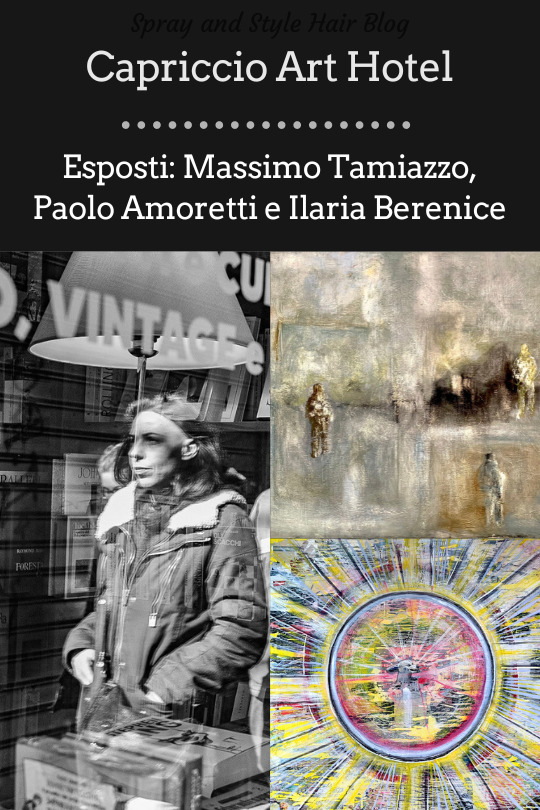
Al Capriccio Art Hotel di Serravalle Scrivia, AL, sono esposti gli artisti Massimo Tamiazzo, Paolo Amoretti e Ilaria Berenice.
Un Hotel artistico di fianco all'Outlet di Serravalle Scrivia.
Il Capriccio Art Hotel è anche tra gli sponsor ufficiali della mostra "La Metafisica del Bianco e Nero" che si svolgerà al Forte di Gavi nei mesi di maggio e giugno 2023.
2 notes
·
View notes
Text
La memoria è vita: Inaugurazione della lapide commemorativa delle vittime del Ponte Morandi ad Arquata Scrivia.
Un evento per onorare il passato e costruire il futuro.
Un evento per onorare il passato e costruire il futuro.Sabato 1 febbraio 2025, alle ore 16.00, il Comune di Arquata Scrivia ospiterà una cerimonia commemorativa presso l’atrio del Palazzo Comunale, per ricordare le 43 vittime del crollo del Ponte Morandi avvenuto il 14 agosto 2018. Un’occasione carica di emozione e significato, che vedrà la partecipazione di autorità, associazioni locali,…
#1 febbraio 2025#Alessandria today#Arquata Scrivia#Arte#Arte contemporanea#Associazioni#Autorità Locali#Bambini#Cerimonia#Città#Commemorazione#commemorazione pubblica#Comunità#Cronaca#Cultura#Davide Daninos#Eventi#Fabrizio Prevedello#famiglia Bottaro#famiglia Robotti#Google News#Iniziativa#italianewsmedia.com#Lapide commemorativa#Memoria#memoriale#nuove generazioni.#Omaggio#Palazzo Comunale#Pier Carlo Lava
0 notes
Photo

Battle of Marengo
The Battle of Marengo (14 June 1800) was one of the most important battles in the career of Napoleon Bonaparte (1769-1821). It not only helped bring the French Revolutionary Wars to an end but also did much to consolidate Bonaparte's new position as First Consul of the French Republic. The battle became a major piece of propaganda for the Bonapartist regime.
Background
In the months after he seized power in the Coup of 18 Brumaire, First Consul Napoleon Bonaparte was far from secure in his new position. He was still considered by many to be an up-jumped Corsican opportunist, and he had no shortage of rivals – such as generals Jean Bernadotte and Jean Victor Moreau – who would be glad to see his fall from grace. Further, the French Republic was still embroiled in the unpopular War of the Second Coalition (1798-1802) against an alliance of anti-French powers including Austria, Russia, Britain, the Ottoman Empire, and Naples. This conflict was part of the broader French Revolutionary Wars (1792-1802), meaning that by January 1800, France had been perpetually at war for the better part of a decade. With much of the general populace war-weary, Bonaparte knew he had to deliver a swift, decisive victory if he wanted to win the support of his people.
His first step was to order the formation of a 30,000-man army based at Dijon, primarily consisting of soldiers who had been on garrison duty in the provinces. Though Bonaparte fully intended to lead this army over the Alps to fight the Austrians in northern Italy, its true purpose had to be concealed; it was named the Army of the Reserve and was placed under the command of Bonaparte's trusted chief of staff Louis-Alexandre Berthier.
While onlookers believed the ruse that this was merely a reserve force, Bonaparte secretly prepared the army for campaigning. Soldiers were trained using the 'canteen' system, whereby eight veterans and eight recruits would march, eat, and camp together, fostering a sense of camaraderie and allowing the recruits to learn quicker. Meanwhile, Bonaparte worked with war minister Lazare Carnot to procure 100,000 pairs of boots, 40,000 uniforms, and 2 million rations of biscuits for the army at Dijon. The First Consul also ordered all major field forces to adopt the corps d'armée system, breaking each army down into mobile and semi-independent corps; this would become a staple of Napoleonic warfare.
As his army was being prepared, Bonaparte poured over maps to decide where he would cross the Alps. He decided to take the main part of his army across the 2469-meter (8,100-foot) Great St Bernard Pass, while a division under General Adrien Moncey would take the St Gothard Pass. During one strategy meeting, Bonaparte purportedly asked his secretary, Bourrienne, where he thought the decisive battle would be fought once the French had gotten over the Alps. "How the devil should I know?" asked Bourrienne, as the First Consul drove a pin into a map on the plains of the Scrivia River. "I shall fight him here," said Bonaparte. It was the exact spot where he would fight the Battle of Marengo three months later, a demonstration of Bonaparte's quick and perceptive mind (Roberts, 252; Chandler, 275).
Continue reading...
15 notes
·
View notes
Text
Unnamed Waitress

‘Self portrait’ by Hildegard of Bingen, detail, Scrivias f., 1r, 1142 – 1152
PART 6
6.1

6.2

6 notes
·
View notes
Video
FS ALe940 058 por maurizio messa Por Flickr: FS ALe940 058 transita in prossimità di Isola del Cantone effettuando il R6069 (Arquata Scrivia - Genova Sampierdarena) del 4 dicembre 2010. In coda l'ALe 801 045. FS ALe940 058 works the R6069 (Arquata Scrivia - Genova Sampierdarena) near Isola del Cantone. back the ALe 801 045. December 4th, 2010
5 notes
·
View notes
Text

Gorgeous sculpture in Serraville Scrivia, Italy 🇮🇹
2 notes
·
View notes
Text
Daytrip - To the sea! Even if the weather is shit
Not many words today, mostly pictures and not many pictures to be frank. It was a weird daytrip day, it was just barely worth the effort.
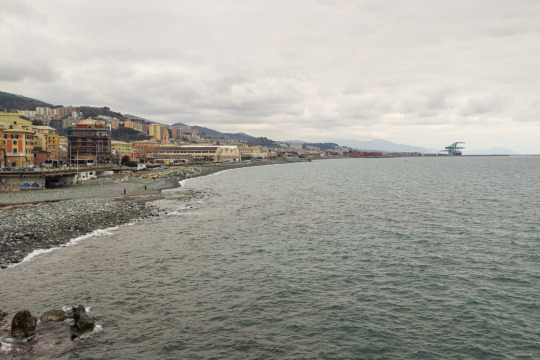
I went in the other direction today, not to the south and Genova Nervi but to the west and Genova Voltri (Genua is... very spread out, and it gobbled up a lot of previously small towns just like Milan did)

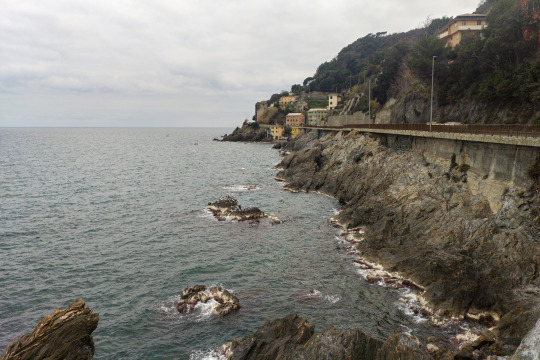
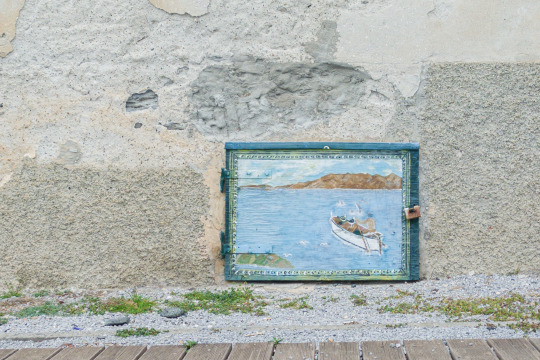
Highlight of the day: I finally, FINALLY, managed to eat again the torta di riso (savoury rice cake) that I tried once years ago by chance in Sestri Levante and for some reason never managed to find again! It was not as good as the memory of that one, but it was Very Good.
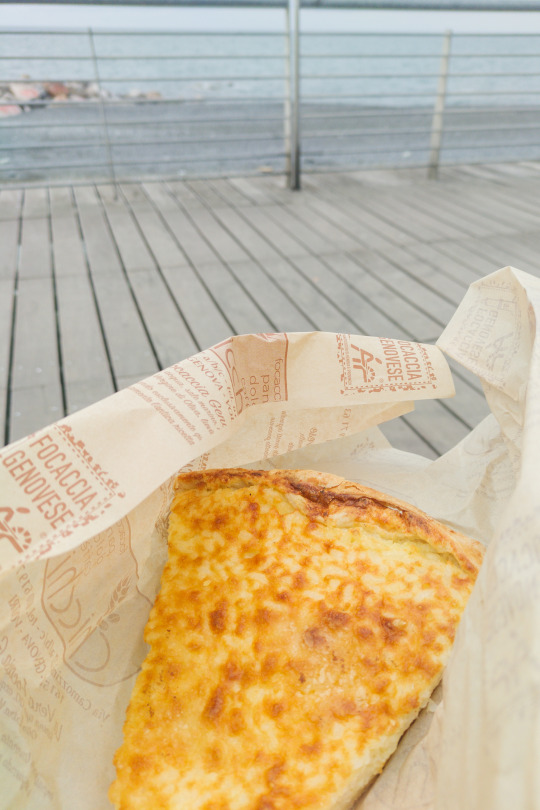
Second highlight of the day: I changed trains in Arquata Scrivia (one of those places with a big train station that tells you they probably used to be very important at some point but then something changed) and when I went looking for the station cafè I found that it was actually the station newsstand with the addiction of a fridge for drinks and small sandwiches and the kind of coffee machine you usually see in houses XD the owner was very nice and the coffee was the best I had all day!

#italy#travel#photography#mag travels from time to time#daytripping#my photography#i just want a tag for the things i personally put out into the world
6 notes
·
View notes
Text
LA metafisica del bianco e nero
L’associazione Arte and Cuisine aps in collaborazione con la Direzione del Forte di Gavi e la Direzione Regionale Musei Piemonte e i Patrocini dela Provincia di Alessandria, del Comune di Gavi, e del Comune di Serravalle Scrivia presenta la mostra fotogra
L’associazione Arte and Cuisine aps in collaborazione con la Direzione del Forte di Gavi e la Direzione Regionale Musei Piemonte e i Patrocini dela Provincia di Alessandria, del Comune di Gavi, e del Comune di Serravalle Scrivia presenta la mostra fotografica “La metafisica del bianco e nero”, che si svolgerà al Forte di Gavi, AL, nei mesi di maggio e giugno 2023. (more…) “”

View On WordPress
2 notes
·
View notes
Text
Allerta rossa a Genova

Previsto un significativo peggioramento delle condizioni meteo in Liguria possibile criticità arancione o rossa. Nel caso venisse confermato il livello massimo di allerta, le scuole resterebbero chiuse. Ma andiamo per gradi. Quello che sappiamo per certo è che dalle 12 di oggi scatta un'allerta gialla per temporali su tutta la Liguria, salvo estremo ponente, la cui chiusura è indicata a fine giornata. L'allerta verrà sicuramente estesa alla giornata di martedì, ma per sapere i dettagli bisogna attendere. Ieri Arpal spiegava: "anche la modellistica odierna conferma lo scenario delineato nei giorni scorsi, con precipitazioni più intense nella giornata di martedì (mattina e pomeriggio), tregua umida mercoledì, nuovo passaggio perturbato giovedì". "Già da lunedì - proseguono dall'agenzia - sono attese precipitazioni anche temporalesche, con una convergenza fra venti caldi e umidi da sud-est con venti più freddi e secchi da nord, convergenza che inizia a organizzarsi dalla parte centrale di lunedì e dura più di dodici ore". "Le cumulate attese sono già lunedì sera più che significative. Per questo motivo - conclude Arpal - alle 12 scatta l'allerta gialla per temporali su BCDE. Dalla serata la convergenza si farà più robusta, preludio di temporali forti, organizzati e persistenti nella notte fra lunedì e martedì mattina. Le cumulate attese saranno elevate, con venti meridionali fra moderati e forti lunedì, forti martedì". L'approssimarsi di una perturbazione, associata a un flusso umido meridionale, porta precipitazioni diffuse in intensificazione dalle ore centrali con cumulate significative sulle zone BCE. Instabilità in aumento con una bassa probabilità di rovesci o temporali forti che, sulle zone BCDE, lascia spazio a un'alta probabilità di fenomeni forti da metà giornata. Venti meridionali moderati con locali rinforzi intorno ai 50-60 km/h sul Levante. Mare molto mosso sul Levante in serata. Previsioni meteo Liguria martedì 8 ottobre 2024 Il transito dell'intensa perturbazione porta nel corso della giornata piogge diffuse tra moderate e forti con cumulate elevate su tutte le zone. Già dalle prime ore della notte si assiste a un deciso aumento dell'instabilità con alta probabilità di temporali forti su ADE; i temporali forti potranno assumere carattere di persistenza sulle zone BC in particolare nella prima parte della giornata. Venti da merdionali fino a forti con raffiche intorno ai 60-70 km/h sulle zone ABCE. Mare molto mosso su tutte le coste. La suddivisione del territorio regionale - A: Lungo la costa da Ventimiglia fino a Noli, l’intera provincia di Imperia, la valle del Centa - B: Lungo la costa da Spotorno a Camogli comprese, Val Polcevera e Alta Val Bisagno - C: Lungo la costa da Portofino fino al confine con la Toscana, tutta la provincia della Spezia, Val Fontanabuona e Valle Sturla - D: Valle Stura ed entroterra savonese fino alla Val Bormida - E: Valle Scrivia, Val d'Aveto e Val Trebbia. Read the full article
0 notes
Text
Autostrada chiusa per cantieri, bimbo soccorso in elicottero
Un bambino di 4 anni è stato soccorso nella notte a Ronco Scrivia dopo essere caduto da una altezza superiore ai tre metri. Per consentire un soccorso più rapido è stato trasportato al Gaslini con l’elicottero Grifo visto che di notte l’A7 è chiusa per lavori. Sul posto sono intervenuti il personale medico del 118 e i carabinieri. Il bimbo è stato ricoverato in codice giallo, quello di…
View On WordPress
0 notes
Text
Interrotto dai Carabinieri un giro di affari da oltre 30.000 euro generato dallo spaccio di droga nel tortonese. Castelnuovo Scrivia
Castelnuovo Scrivia – Un impegno incessante quello dei Carabinieri nel contrasto alla diffusione delle droghe nel territorio tortonese.
Castelnuovo Scrivia – Un impegno incessante quello dei Carabinieri nel contrasto alla diffusione delle droghe nel territorio tortonese. Il monitoraggio quotidiano e il “recupero” di piccole quantità di stupefacente da parte delle Stazioni e del Radiomobile della Compagnia di Tortona hanno permesso all’Aliquota Operativa di strutturare un’attività di indagine con servizi di osservazione, controllo…
#30.000 euro#Aliquota Operativa#allarme cittadino#CAMPO SPORTIVO#Carabinieri#Castelnuovo Scrivia#cavalcavia Castelnuovo#Cocaina#Consegne a domicilio#consumatori droga#contrasto alle droghe#Controllo del territorio#custodia cautelare#Eroina#Google News#https://alessandria.today/#indagini Carabinieri#indagini giudiziarie#intercettazioni telefoniche#interventi Carabinieri#italianewsmedia.com#lotta al crimine#Lotta alla droga#monitoraggio del territorio#movimenti sospetti#Operazione Antidroga#Pier Carlo Lava#Pontecurone#prevenzione spaccio#Procura di Alessandria
0 notes
Text
UNA MADRE ENVENENADA – DON ORIONE (un pasaje de su vida)
Una noche de invierno hablaba en la iglesia parroquial de Castelnuovo Scrivia, la cual se hallaba llena de fieles llegados de pueblos vecinos. El tema era “La misericordia de Dios”, y por demostrar la grandeza del Sacramento de la Penitencia, dijo esto: “Si un hijo fuese tan perverso que pusiera veneno en plato de su madre para matarla y se arrepintiera luego de tal monstruosidad, también…
View On WordPress
0 notes
Text
Dalla costa alle montagne: Itinerari turistici nella Regione Liguria
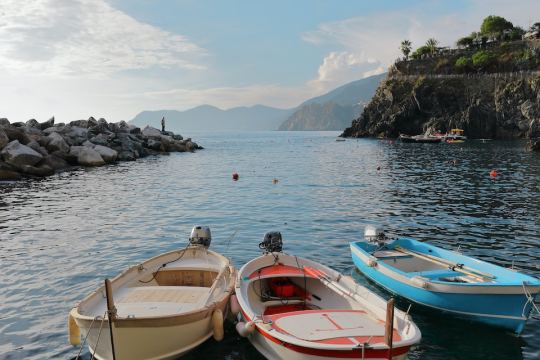
La Regione Liguria, situata nel nord-ovest dell'Italia, offre una varietà di paesaggi da scoprire. Dalla costa alle montagne, la Liguria è una meta turistica ideale per coloro che amano la natura e la cultura. In questo articolo, vi presentiamo alcuni dei migliori itinerari turistici nella Regione Liguria. Iniziamo dalla costa, famosa per le sue spiagge, le scogliere e i paesaggi mozzafiato. Le Cinque Terre sono un must-see per tutti i turisti che arrivano in Liguria. Queste cinque città costiere - Monterosso, Vernazza, Corniglia, Manarola e Riomaggiore - sono state dichiarate patrimonio dell'umanità dall'UNESCO e rappresentano uno dei luoghi più suggestivi della regione. Le Cinque Terre offrono alcune delle migliori passeggiate del mondo, tra cui il celebre sentiero dell'Amore, che collega Riomaggiore e Manarola. Da non perdere anche la spiaggia di Fegina a Monterosso e la Baia del Silenzio a Sestri Levante. Nella zona di Levante, si trovano le famose cittadine di Portofino e Santa Margherita Ligure, entrambe celebri per le loro architetture colorate e l'elegante stile di vita. Portofino è sicuramente la più famosa, non solo per la bellezza del centro storico ma anche per il suo porto turistico e la chiesa di San Giorgio. Santa Margherita Ligure invece, ospita il belvedere dei Cappuccini, da cui si può ammirare uno splendido panorama sull'intera costa. Spostandoci verso l'entroterra, incontriamo la zona di Val di Vara, famosa per i suoi paesaggi collinari e le sue cittadine medievali. Uno degli itinerari più belli è quello che parte da Varese Ligure per arrivare a Sestri Levante, passando per Borzonasca, Rocchetta di Vara e Casarza Ligure. Spostandoci verso la Valle Scrivia, si trova la città di Genova, la città più grande della regione Liguria e una delle città italiane più affascinanti ed incantevoli. Il centro storico di Genova è stato dichiarato patrimonio dell'umanità dall'UNESCO e vi sono molte attrazioni da scoprire come il Palazzo della Dogana, il celebre Acquario di Genova e la Cattedrale di San Lorenzo. Procediamo verso l'entroterra ligurico, e la zona di Langhe, famosa per il vino. Uno dei percorsi più belli è la strada del Barolo, che attraversa le città di La Morra, Barolo, Monforte d'Alba e Novello. D'altra parte, la zona di Val di Magra, a confine con la Toscana, offre dei paesaggi mozzafiato. Tra le cittadine più interessanti, Menaggio, Pitelli, Ameglia e Sarzana, quest'ultima una cittadina fortificata con un importantissimo patrimonio culturale e archeologico. Infine, non possiamo non menzionare la zona di Portovenere, un borgo marittimo sulla punta della penisola di Levante, celebre per le sue scogliere e il suo caratteristico porticciolo. Da Portovenere, è possibile partire per l'isola di Palmaria, una destinazione molto popolare tra i turisti che viaggiano in Liguria. L'isola di Palmaria offre un mix di natura e storia, con una bellissima spiaggia di ghiaia bianca e una fortezza costruita dai Genovesi nel XVI secolo per proteggere la città dalle invasioni piratesche. La bellezza dei paesaggi, la ricchezza culturale e l'esperienza culinaria imparagonabile rendono la Liguria una meta turistica bella e interessante, da scoprire in ogni sua sfaccettatura. Fonti: - Cinque Terre: https://www.parconazionale5terre.it/ - Portofino e Santa Margherita Ligure: https://www.turismo.provincia.genova.it/ - Genova: https://www.visitgenoa.it/ - Strada del Barolo: https://www.stradadelbarolo.it/ - Val di Magra: https://www.provincia.sp.it/ - Portovenere e isola Palmaria: https://www.portovenere.it/ Fonte immagine: Foto di Maksim Shutov Read the full article
0 notes
Text
Il surrealismo fotografico di Carlo Ferrara
In questo episodio Carlo Ferrara racconta la sua fotografia a Ilaria Berenice che lo intervista per il podcast di Arte and Cuisine
Carlo Ferrara è un fotografo di Serravalle Scrivia, AL che da giugno espone le sue fotografie nel progetto della mostra collettiva fotografica “La Metafisica del Bianco e Nero” al Forte di Gavi, AL. In questo episodio racconta la sua fotografia a Ilaria Berenice che lo intervista per il podcast di Arte and Cuisine “Storie e Personaggi“. Continue reading Untitled
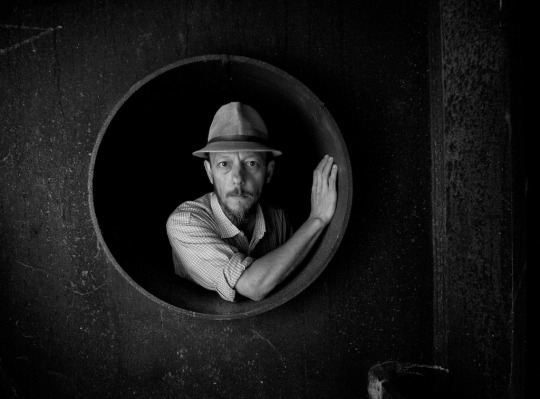
View On WordPress
0 notes
Video
FS ALe940 058 por maurizio messa Por Flickr: FS ALe940 058 transita in prossimità di Isola del Cantone effettuando il R6069 (Arquata Scrivia - Genova Sampierdarena) del 4 dicembre 2010. In coda l'ALe 801 045. FS ALe940 058 works the R6069 (Arquata Scrivia - Genova Sampierdarena) near Isola del Cantone. back the ALe 801 045. December 4th, 2010
4 notes
·
View notes
Text

Amazing Gorgeous sculpture in Serraville Scrivia, Italy 😀
1 note
·
View note